

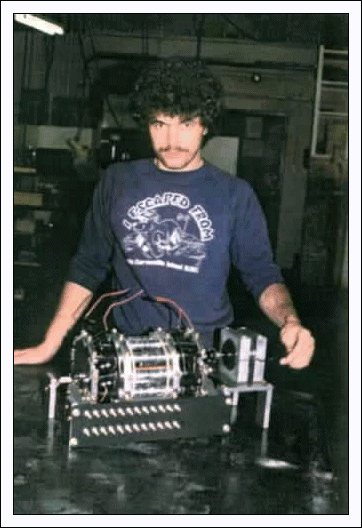


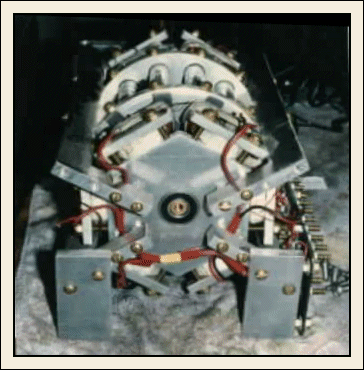

INTERFERENCE DISC GENERATOR of Al Francoeur
(as posted on the energy 21 site)
Self running regenerating machine
Click any photo for a larger image
 |
 |
 |
 |
 |
 |
 |
GENERAL DESCRIPTION OF THE INTERFERENCE DISC GENERATOR
This device is described in a non-technical format so anyone can understand the concepts, it is an improved version of the Ecklin generators. It seemed logical to me that to produce electricity more efficiently the design of the generator had to be altered to rotate less internal mass with a balanced rotor disc. At the same time it has to allow for a collapsing magnetic field within the coils without rotating the magnets or the coils.
Using more powerful neodymium magnets and amorphous coils, I designed the system in such a way as to allow the flux to circulate in a magnetic loop while incorporating magnetic shielding. I performed some simple experiments with magnetic shielding using iron strips, ceramic magnets and small transformers. I positioned the magnets and the transformer stationary opposite of each other with an air gap between the magnet and the transformer.
Once the apparatus was assembled I proceeded to move the metal strips in and out of the air gap between the magnet and the transformer which has produced an AC pulse in the stationary coil. Using this principal and refining the design I built a mechanical device incorporating magnetic shielding into the design. I named it the Interference Disc Generator being that the metallic thin iron disc interrupted the magnetic field in the air gap (neutral zone) between the coils and magnets.
This method is unique in that it produces electricity with greater efficiency due to both the magnets and coils being stationary, brushes and a commutator in this design are not needed and it requires very little startup torque. The first of this concept came to me in 1985 in Yellowknife NWT as I worked in the mining industry.
I worked part time in a machine shop in Calgary Alberta in the summer of 1986, this is where I built the components and tested the first Interference Disk Generator. With this information released you will see a schematic diagrams of the first generator prototype with numbers corresponding to parts.
You can also see high quality photos above of the actual machines during several stages of development and the original description. There is enough information to replicate the device and to improve upon it.
I have also replicated the Gary W. Wesley permanent magnet motor from 1879, the magnet motor does seem to produce over unity but it is not connected as a self-runner yet. The neutral zone that Gary W. Wesley talked about is real and it does by pass back EMF. I felt it is worthy of reproducing this interesting device for it is related to the Interference Disc Generator that I constructed many years ago, which also by passes the back EMF.
The reproduction of the Gary W. Wesley permanent motor that I have constructed is not exactly the same, for I used two large very powerful neodymium horseshoe magnets that are incorporated into the design. The principal is similar and it does show very interesting results regarding balancing of the Interference shield, this is what contributes to the apparent over unity results. There are no field coils in the design of the reproduced Gary W. Wesley permanent magnet motor.
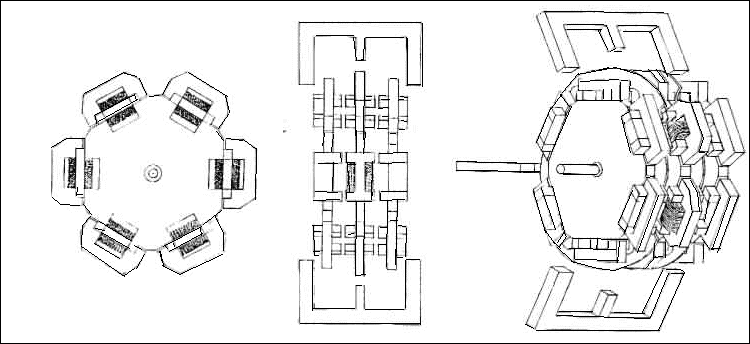
SCHEDULE "A"
GENERAL DESCRIPTION OF THE
INTERFERENCE DISC GENERATOR
The Interference Disc electrical generator is made of a stator (114) consisting of an array of even number parallel mounted bar magnets (112) arranged and supported (114) in a circular fashion equidistant from each other, where the polarity of the magnets (112) are alternating when viewed at either end.
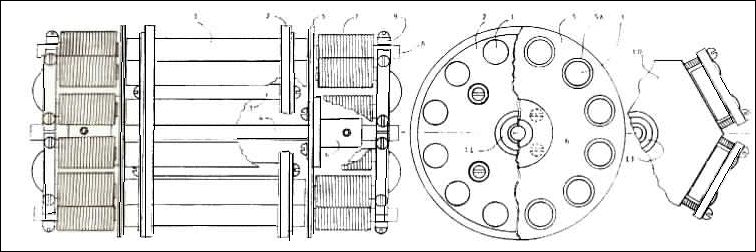
Also in the stator (102) there are twice the number of coils (111) as bar magnets (112) wound in pairs on U-shaped cores (110). One half of the coil pairs mounted at one end of the bar magnets (112) in the same circular fashion, each corresponding to and aligned opposite to a pair of bar magnets (112) and separated from it by an air gap. On the other end of this pair of bar magnets (112) there are another set of coils (111) aligned likewise.
*The rotor is made of two magnetically susceptible circular plates (109A or 109B) (such as iron or steel) centrally mounted on an axle (107) which is in respect to the array of magnets and coils.
The interference discs (109A or 109B) are separated from each other such that they can rotate in the air gaps between the magnets (112) and the coils (111). The interference discs (109A or 109B) have a number of equidistant opening, either more or less in number than the number of the bar magnets (112)..
The arrangement and size of the openings are such that when the discs (109A or 109B) are rotated by an outside motive force, they open the magnetic field between adjacent bar magnets (112), and the opposing coils (111) at both ends of the stator (114) simultaneously, hence inducing an alternating electric current in the coils (111).
By opening and closing the magnetic influx to the core (110) of the coils (111), an alternating current will be generated in the coils (111) in a retro-order to the rotational direction of the interference discs (109A or 109B). Depending on the number of magnet-coil assemblies three phase AC current can be obtained. The regulation and attenuation of these currents can be achieved by known electric engineering methods.
OPTION I AND OPTION II ASSEMBLIES.
A variation of this option I or option II generator has been constructed by mounting two sets of magnets (113) of the stator (115) on magnetically susceptible rings (119) such as soft iron. The polarity of the neighboring magnets (113) are alternating N, S, N, S, etc.
Adjacent to one ring of the magnets and separated by an air gap are parallel mounted induction coils (111A) corresponding to and aligned with the magnets (113). On the other end of the coils, (111A) are an identical set of magnets (113) arranged in the same manner as the first set, but the polarity is reversed in respect to the coil (111A). Thus if on one of the end plates (123) the magnetic pole facing the coil (111A) is the (N) pole than on the opposite end plate (123A) the (S) pole will face the coil (111A).
The rotor (109A or 109B) and itís configuration is the same as in the first variant (see*), and the induction of AC current, occurring in the same manner and in the same order as described before. This assembly can be constructed in any practical multiple units of the above (123A).
Some of the unique characteristics of this design are:
Take a look at the drawings provided, look at the interference disc, one has 11 fins, and the other has 10. I tested a disc with 12 fins, (the same number of magnets) but it had a large static hold on it. I also tested a 10 fin disc with improved results that lead to a reduction of energy input, but the 11 fin disc proved to reduce the drag on the drive motor the most. Using the 10 or 11 fin disc the apparatus needed very little start up torque to rotate the discs. Magnetic balancing of the disc does reduce start up torque on the rotor disc regardless of the number of poles on the disc so long as it is less than the number of magnet poles.
Each and every time I changed the disc on the generator it involved a complete dismantle and reassemble to continue the experiments. The horse shoe coil shape was chosen because it provided an easy flow for the magnetic flux and it fit the overall design very well. Using amorphous alloys instead of soft iron in the coils made for a higher efficient coil with less hysteresis losses and with no heat buildup in the coils.
I used 14 gauge magnet wire to wind the early coils and I wound several of the coils with approx. 100 to 250 turns of wire, 4 coils with 250 turns of wire each. Four coils with 100 turns each, and the other 4 were used for experimenting with other combinations, there are 12 coils in the early machine and 6 larger (letter I shape) coils in the latest machine. The coils in the larger machine were wound with #12 gauge wire.
The efficiency of the unit would vary greatly depending on the speed of rotation, the width of the air gap, the strength of the magnets, and the materials used to construct the coils. I used nickel base amorphous met glass in the coils in both the smaller and larger machines. The efficiency of the machine is inconclusive because my funding was depleted during the testing stage, this has shelved the machine until a later date when I can restore funding to complete the development of this Interference disc generator concept. However I publicize my work in this machine so as to help in your progress and or to give you ideas to advance your projects.
The Interference Discs Generators in this document has the potential to produce over unity. Refining the device with tighter tolerances and correctly selected materials and incorporating internal magnetic balancing will add to the success of this unique generator design.
Less energy is needed to spin the rotor while causing a moving magnetic field in the coils, It is easy to visualize the advantages this design has over conventional generators and motors.
The interference discs will need to be constructed stronger while using rare earth neodymium magnets high permeability steel would be a good choice. Using high permeability steel will reduce the warp in the interference discs allowing for a smaller air gap between the magnets and the coils. I also suggest constructing several layers of metglass shielding material (laminated amorphous alloys) pressed together with very strong epoxy resins. Using amorphous alloys in the interference discs will produce superior magnetic shielding with almost zero hysteresis. The flanges have to be constructed to support the discs and to eliminate the warpage in the disc, at the same being small enough to fit the design and keeping the mass in the rotor/discs to a minimum. Doing these few improvements will equal to a big increase in electrical output and improved efficiency.
The characteristics of using the 11 finned disc to balance the rotor disc will have the same effect of reducing start up torque regardless of the type of magnetic material used. The use of high powered rare earth neodymium magnets produces greater amperage output, and increased stress upon the interference discs due to stronger magnetic fields pulling on the discs.
Remember to use high permeability high strength steel as the metal of choice for constructing the discs for durability and closer tolerances and less cost. Amorphous metglass shielding material will give you the best results for this application but with an increased cost.
There is plenty of room for improvement in this design while the operating principal remains the same. Looking at the photographs included you will see that the 1st generator frame is constructed mainly from aluminum. This metal was used only because it was an inexpensive material and easy to work with for the first test generator.
Non magnetic and non-conductive materials should be used to construct the generator frame supports to eliminate the eddy currents. Many of the nuts and bolts used to hold the generator together can be eliminated for they were used just to hold it together for testing.
I am sure that you could come up with some real good ideas and improvements of your own with this concept. If you do I would sure like to know so we could all benefit from them.
Many improvements were adopted in the next much larger #2 version of the Interference Disc Generator. Phanolic material (non conductive and non magnetic) were used in the frame supporting the magnets and the coils thus eliminating eddy current losses within the frame support.
Large aluminum E bars were used to support the magnet frame support and the coil frame support with no noticeable eddy current losses. The aluminum used is positioned further away from the coils and magnets in the larger generator so as not to be affected by the magnets. Much larger neodymium magnets and larger I shaped transformer coils were tested in the larger unit that has an increase in output power over the 1st machine.
Using the more powerful neodymium magnets created some problems with the interference discs. Not only did they warp the discs they caused them to vibrate and chatter causing the fins to hit the magnets and the coils. I increased the air gap to over half an inch and moved the disc further away from the magnets to prevent damage.
The effect was a reduction of magnetic flux reaching the coils that reduced the power output. The discs must be constructed much stronger and rigid if using neodymium magnet grade 35 or greater. After this has been done the air gap can be closed so more magnetic flux will reach the coils allowing for a greater electrical output.
The wiring circuit can be constructed by known engineering methods to rectify the output current, as well the coils are stationary which makes it easy to harness AC power directly from the coils without brushes. The coils can be wired in series or parallel so long as they are in phase, the number of the poles on the interference disc determines the phasing of the coils.
Financing had been exhausted with the development of the two Interference Discs Generators. I have over 35 thousand dollars in the development of the generator concept up to this point since 1985-86. I decided to write this report and release the knowledge to the public in the hopes that others will replicated the machine for the advancement of over unity systems.
Any one is free to develop and use this technology for the benefit of all in need. I have covered a lot of ground and research in developing the Interference Disc Generator thus far, including replicating the Gary W. Wesley permanent magnet motor. A lot of the home work has been done for you, but more work and refining is needed to perfect the Interference Disc Generator for the ultimate goal of producing an over unity self regenerating permanent magnet machine.
I have several machines on the go and I can only complete one at a time, this release is so others can make a contribution to the cause and have a starting point of where I left off with this machine if you choose. I hope this will help you on your quest in reducing your dependency on the grid one way or the other, whether your reproduce the concept or it stimulates even better ideas in your mind.
I wish you good fortune and success in developing your own Interference Disc Generator if you chose to take on this challenge. Take what you have learned in this report to your advantage and build your machine at less cost than the authors price tag.
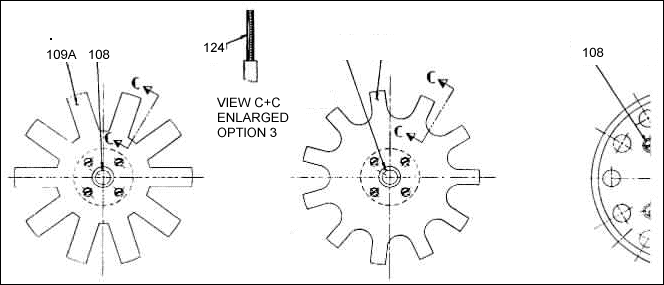 |
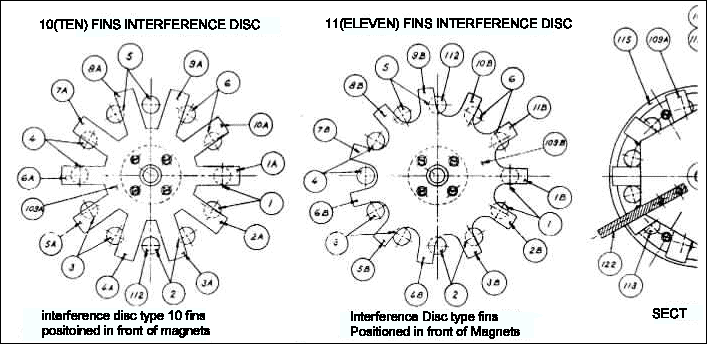 |
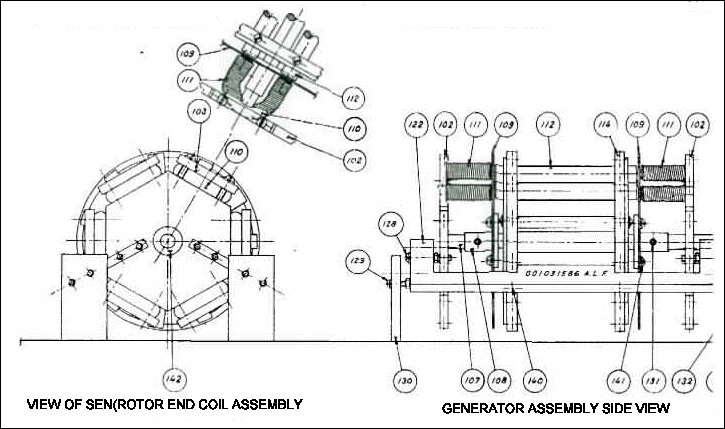 |
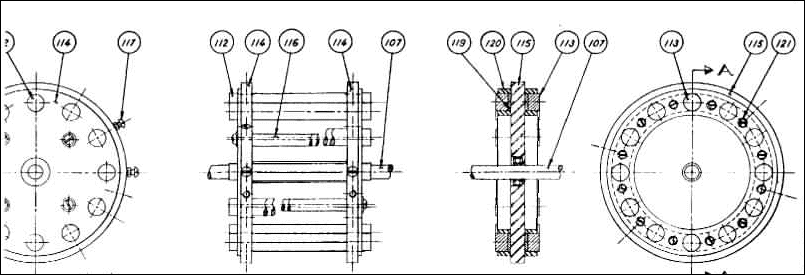 |
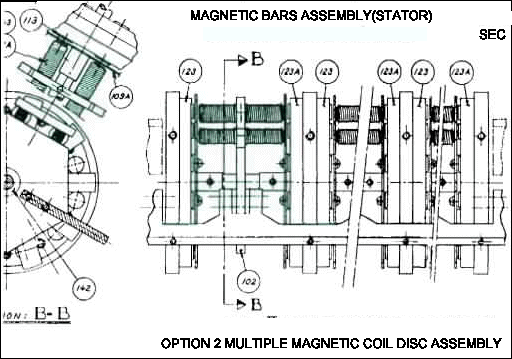 |
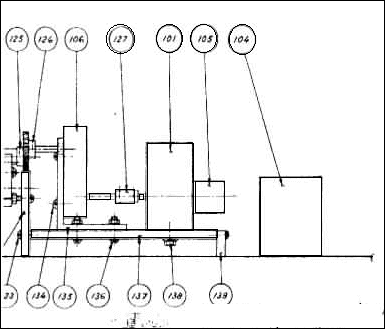 |
 |
Greetings to All
This is a one time last post only.
This post is an update on the status of our motor generator systems, first of all I would like to say, it's takes a great effort building these machines at this scale, don't under estimate the amount of time, work and money we have put into all this for the last 21 years. At this moment we are this >< close to having it. I have been writing this email post for over 4 weeks now because I have had little time to spend on the computer. Some people might say I have to many inventions, I say, oh well - I can't help it, I keep getting more ideas.
Our machine is now able to run closed loop, with an open system, with extended run time per charge, with the electrical energy from the output coils going directly into the battery/motor as it is running. Yes it is a self runner!!!, it has been for almost three months.
Tests to produce an abundance of heat.
I am testing the machine so as the output coils are connected to regenerate the 12 volt battery as the motor is turning the rotors. I am using a nice bran new permanent magnet 1/4 hp 24 volt dc motor that is running on 12 volts to turn the 110 pound 3 balanced rotors, or the 35 pound 1 rotor version. The 24 volt DC motor set up is temporary, and is being used for testing of the regenerating dc impulse coil circuits before the brushless-motor-dc-impulse system replaces the dc motor. The high efficient brush-less-motor-impulse system will replace the dc motor, after I complete a series of test that involve using the dc drive motor and the impulse-regenenerating-transient-overshoot-circuits together. I completely rebuilt my present controller and installed 6 new 70 amp power mosfet drivers and new hall sensors to replace the damage ones, it has been working really well ever since. I have 75 of these high amp mosfet switches and 30 hall sensors as spares if I need them, as such they will also be used for the regenerating impulse circuits for the switch. The machine is almost virtually silent when it is running.
The regenerating output coils at this moment are producing AC to DC power (during full duty time) with no noticeable ripple on the scope. The generated dc energy is going back into the battery, in which the motor uses immediately to produce the torque needed to rotate the rotors, the generated dc power is again going back into the battery/motor. The result is that the battery supplies less power to the motor when I run the machine with the regenerating DC current going into the battery. The motor is a conventional 1/4 hp dc permanent magnet motor that during one of many switch mode test, it consumes 15 amps at 12 volts from the battery, while the regenerating coils (In full duty cycle mode) puts back 10 amps at 12 volts, which now supplies 10 of the 15 amps that the battery supplies to the motor. The battery gives 5 amps and the regenerating coils gives 10 amps to the motor. This effect can be changed depending on how many open isolated regenerating banks of coils are activated.
At this point, the battery supplies 5 amps to the motor, and the regenerating coils provide the other 10 amps to the battery/motor that make up the 15 amps total the motor is using to turn the rotors, during this switch mode. So the motor is doing the work of a 15 amp draw while only getting 5 amps from the battery. The motor gets hot after a while from using 15 amps, while only getting 5 amps from the battery and 10 amps from the regenerating coils. It produces an excessively large amount of heat in the dc motor that is (useable output energy to heat your home, etc., on a large scale) with only a small amperage supply from the battery. Hell, sounds good so far! Over unity that has manifested as high heat output!
Cooling tube coils wound around the motor, with water flowing through the tube coils to cool the motor, will produce hot water at the same time. Sounds like a good high efficient electrical heat pump marriage to me! Hot water, and electric power at the same time. The draw back of using the brush-less motor controller impulse system is that it will not get as hot as the dc motor does, thus not much heat (from tube cooling) for producing hot water is available. In this case, the electric power generated out of the machine will make all your hot water needs, due to the increased efficiency and cooler running of the motor-impulse system.
Ongoing testing to increase the run time during the regenerating mode will include.
The dc motor will also be used for testing of the regenerating impulse circuits, these circuits will turn the output regenerating coils on and off at time intervals during the attraction duty cycle. The back emf will be switched off just past the magnets 12 o'clock position on each of the multiple isolated phase coil banks that I connect this circuit to... The rotor at this point will spin like a free wheeling flywheel while producing its own power during the attraction duty cycle, there will be no load on the isolated coil banks when the magnet leaves each isolated coil bank. The high spike transient over shoot will be gated into 6 large fared caps, it then will be used for the high energy explosive electrical discharges that will drive the isolated motor impulse coils, and create what has been termed, (the radiant event or electrical shock wave in the conductor). This will turn the rotors with an extra secondary kick in the ass at every (rapid multiple) pulse duty time, with rapid multiple very short releases of high energy potential discharges that take place one rapid discharge after another at the moment of the closure of the switch. The shock wave effect of energy that manifest at the instant of the closer of a switch will be reproduced in multiple unidirectional rapid successions on a buss bar that will be directed to power the new impulse motor system. The dc test motor will be remove during these test so it will not get damaged. Refer to this site to learn more, Free Energy Website - Edwin Gray, Nikola Tesla, and Dr Peter Lindemann , cold electricity.
Interesting effects are shown when one stands back and watch the rotors turn with the output coils delivering their ac to dc electrical energy directly into the battery/motor, even at this stage. It's very interesting to see the entropy and enthalpy change while the machine is running. The whole machine becomes 100% solid state with no physical contact on the rotors, the bearing losses will be zero with the installation of a magnetic levitation bearing suspensions system, or air bearings, in which becomes an option made available on the machine. This in turn will allow the machine to be run in a vacuum environment to rid the windage losses, and mimic a spinning satellite in orbit in a safe controlled environment.
On another of the many switch mode configurations that this machine can do.
When I switch on all 6 isolated banks of regenerating coils to charge the battery, the motor will draw 25 amps at 12 volts, at this switch mode the battery is supplying only the original 10 amps at 12 volts. The other 15 amps that the motor demands under full load comes from the regenerating coils that causes the load in the first place. It's a conventional dc motor with an unconventional generator on the other end, this test is to see how much heat we can generate in the dc motor for a small given amount of power. I am using the motor in this test to see how much heat I can generate in the conventional dc motor.
(The machine can house up to 18 banks of isolated open coil systems in the present form)
The amorphous coils remain cool to the touch where as the conventional dc motor gets very hot with higher amps going through it, after running for a while. The machine also has a much longer running time when the coils are regenerating the battery, as compared to running an outside equal load with the same amp draw, in that case the battery drains much faster.
This explains the observation of the high heat build up in the motor side (pressure side) of the circuit while being cooler on the generator side (amorphous side) of the circuit. After hours of run time the battery begins to drain, when this happens the battery begins to show tangible temperature changes from one side of the battery to the other. The whole negative side of the battery remains cool to the touch, while the whole positive side of the battery gets warmer to the touch, the effect is repeatable every time and only happens when the regenerating coils are connected to charge the battery as it is running. It seems to be aproxmately 20 degrees or more difference, depending on how many regenerating coils are activated. There must be exothermic reactions and endothermic reactions going on inside the battery/machine that is causing this temperature difference. I can change the load on the machine from the flick of a switch, which in turn dumps it's energy back into the battery pack, or outside load. Doing this changes the efficiency ratio of the machine depending on how many banks of regenerating coils I activate, and it also changes the temperature difference on each side of the battery. I will be winding 4 bifilar coils on amorphous cores so as to observe the difference in performance.
High amperage Mosfet switches will be connected to the output of the regenerating coils to control the on/off duty time during the attraction phase of each isolated generator bank, hall sensors are being used for the timing-switch-control of the mosfets. I am looking back at more of Tesla's work to harness these high energy unidirectional discharges using high voltage lightning discharges with gaps. Transmission coils and receiving coils will be specially constructed so as to deal with the radiant event that takes place on the conductor. Please refer to Tesla's wireless transmission of electricity technology to understand more of this if you need to.
I have had many inquiries for an update of the Interference Disc Generator.
The Interference Disc Generator will be undergoing a complete over haul with new upgrades in order to realize it's full potential, it will include a new set of high strength Interference amorphous discs, and 12 new horse shoe shape neodymium grade 45 magnets. The Interference Disc generator will be tested at very high rpms without the worry of magnets flying out and rotor destruction, as you know the coils and magnets are both stationary in this design. I have many amorphous coils for the Interference Disc machine and It will be tested on line with my other present large motor/generator developments to compare its efficiency with my other systems. If you move the flux field with out moving the magnet or the coil, you have greatly simplified the machine with less electronics. THE INTERFERENCE DISK ELECTRIC GENERATOR BY ALAN L FRANCOEUR , GENERAL DESCRIPTION OF THE INTERFERENCE DISC GENERATOR , or check out the energy21 site.
Tesla did not have the electronics that we have today, and he still achieved the results he was looking for. So why do we need all the fancy electronics that have to be protected from the high energy transient spikes to achieve the radiant event? So get back to simplicity as nature intended, we don't need the micro chips at all to get our high energy switching, look deep into Sir Frances Bitter degaussing system, there are some clues for you there. You can also refer to the Gary Wesley permanent magnet motor from 1876, in which I have replicated.
Zero Input Magnetic Impulsion motor
The Zero Input Magnetic Impulsion motor is not ready for testing as of yet but will be soon. I have been first working to complete the electrical impulse systems on the present large machine. Most of the parts are built for the Impulsion permanent magnet motor with only a few parts remaining, machine shops are not cheap these days. It is my ace of spades or trump card with no impulse electronics, if I installed an impulse system on it, it will turn to fast and I don't want magnets flying out. Nothing more will be posted on it for a patent will be applied for.
Vapor Carb system
The vapor fuel management system will help clean up your internal combustion engine and give your automobile better gas mileage with the atomizing of the fuel, it's as simple as that. The engine then uses this atomized gasoline fuel (as if it were propane or natual gas vapor), to run the motor with efficiency improvements (measurable on gas analyzer and on the road) as compared with a motor not equipped with the vapor system. My system works with no plasma effect at all and it is NOT a geet carb, it cracks the gasoline fuel using high temperature engine waste heat, nothing more. I built my first vapor system back in the summer of 1980. The price of gasoline will be going much higher ($1.00 per liter in Canada) very soon, how bad will you want this vapor carb technology then?
We have realized a variety of power systems to fit a multiple of energy applications that also include the gasoline fuel vapor management system, all with a very low working budget as compared to some others.
This is my last Post and I am leaving all groups for good reason, in which I will not talk about.
I am listed on many energy groups that I posted this update on, and this will be my last email post from now on. I have had to many people come here and make me promises that they just do not keep. Because of this, all public demonstrations are over....... I don't need the emotional ups and downs that comes about as a result of all the promises of funding that have been made to me. Perhaps they become afraid to get involved or fear the large undertaking that this development is going to need. From now on, any future demonstrations will be by invitation only in order for me to weed out the crowd. I am working to form the right working team after I Incorporate my business (Magnetic Energy Systems) and begin the licensing, copyrights and patent process..
If you email me to pick my brain for more information, don't waste your time or my time. I will only engage in negotiations with those who has the interest and funds to invest, absolutely NO middle men at all.
I gave to you all (people all over the world) the Interference Disc generator for free, with out payments of royalties or compensation to the inventor. It is my gift to help you on your quest to be off the grid, for the machine also has clues if you look for it... I see no one replicating the device as of yet, Oh well.., its your loss not mine, your missing out on a good one. If you need to know more about it, read about the late Eklin generators and the Gary Wesley magnet motor from 1876 Gary Magnetic Motor , or Gary Magnetic Motor , in which I have successfully replicated with very little funds, mostly sweat from the construction and tuning process for I had most of the materials here already.
Sometimes an inventor must hold back on key information for good reason, I have a family to think about. My email address will be no longer in aprox two weeks, to rid the spammers and all you hackers that are trying to break into our system, as such, I do not store any valuable information on this computer.
Good luck and regards to you All
Working for a better cleaner world with high efficient energy devices.
AL Francoeur
Research/Inventor
Magnetic Energy Systems
BC, Canada